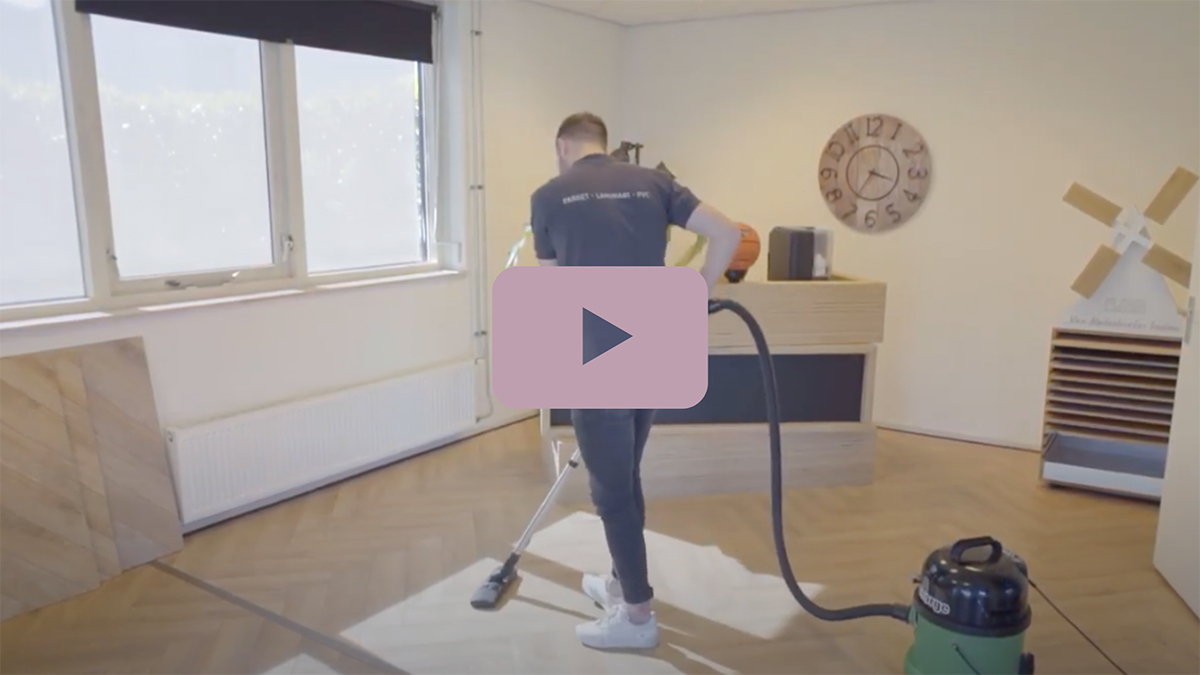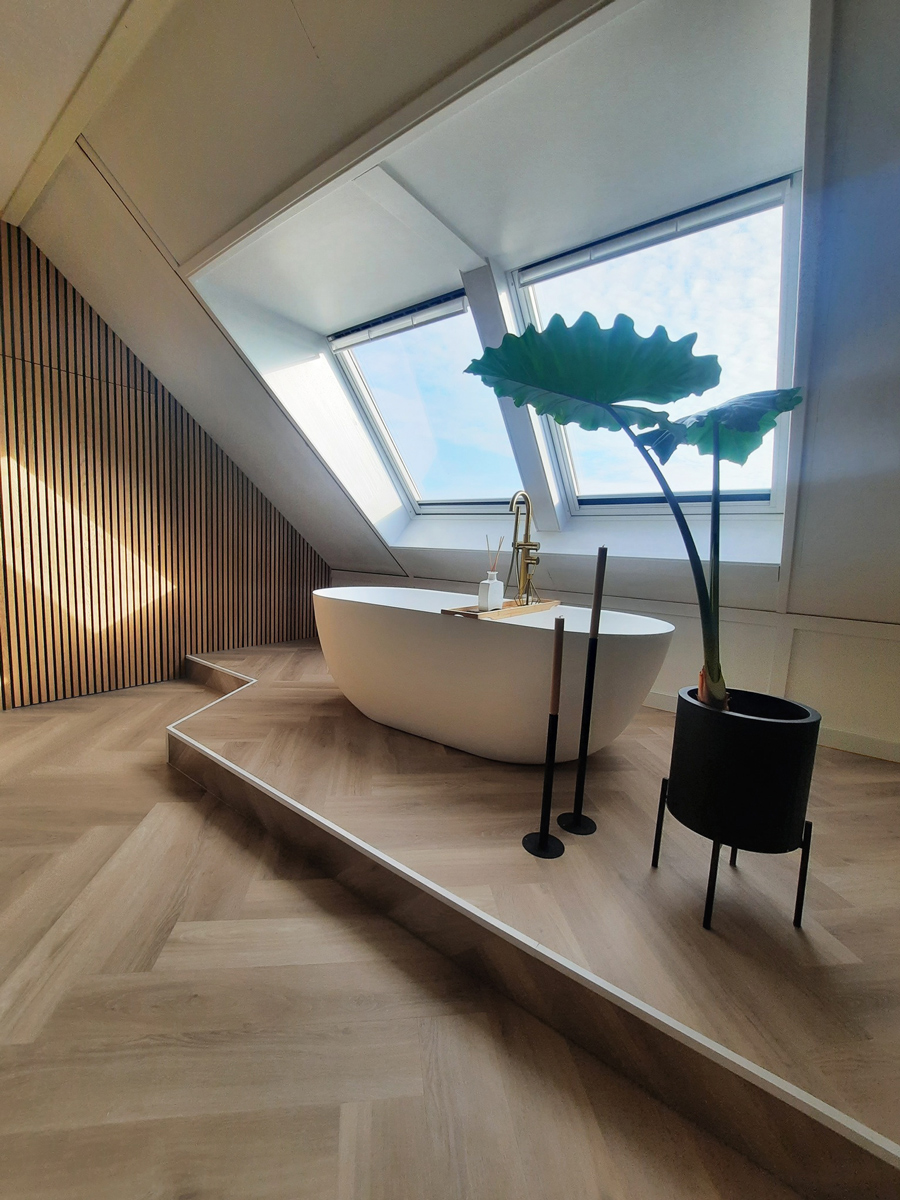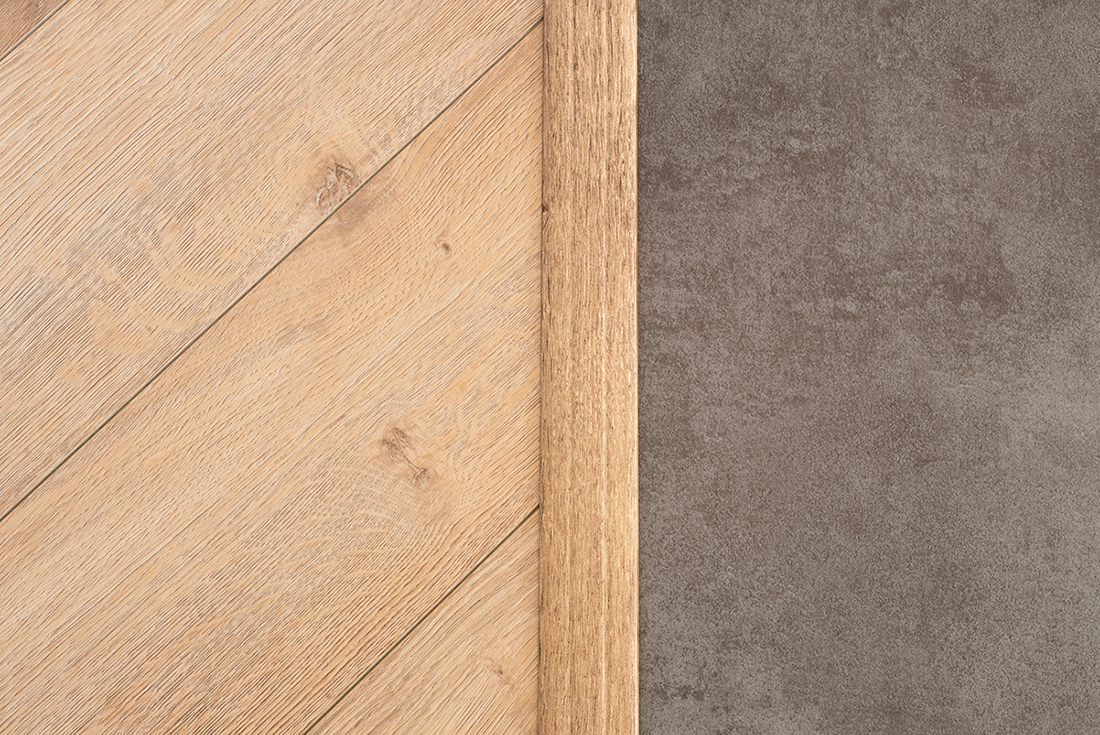Of course, you would prefer to enjoy your new floor as soon as possible. However, it is important to take it easy for a little while. Just like humans, a floor also needs time to adjust to a new environment. But why acclimatisation is important for a new flooring? Why is this important, and how long does a Whalebone Vinyl or XL wide Laminate floor need to acclimatize? You can read all about it in this article!
Why does a floor need to acclimatise?
The first step in installing a new floor is acclimatising the floorboards. This applies to all types of flooring, including oak parquet, rigid click vinyl, dryback vinyl, and herringbone laminate. Acclimatisation is the process of letting the floorboards adjust to the indoor climate of your home before installation. This is a crucial step to prevent the floor from expanding or shrinking after installation. If a floor doesn’t acclimatise well enough, it can cause problems later on.
A new floor should acclimatise for at least 48 hours in the room where it will be installed!
Conditions for acclimatisation
 Acclimatising a floor should be done under certain conditions to allow the new floorboards to get used to the new climate properly. Therefore, ensure that the indoor temperature during acclimatisation is similar to the final living temperature. If you usually set your thermostat around 20°C, then set it to about the same temperature for acclimatisation. Additionally, keep the humidity of the room at about 50% to 60%.
Acclimatising a floor should be done under certain conditions to allow the new floorboards to get used to the new climate properly. Therefore, ensure that the indoor temperature during acclimatisation is similar to the final living temperature. If you usually set your thermostat around 20°C, then set it to about the same temperature for acclimatisation. Additionally, keep the humidity of the room at about 50% to 60%.
The floor packs should be arranged on top of each other in a hashtag (#) pattern in the room where they will eventually be laid. This pattern ensures optimal airflow. Never place floor packs upright! Also, keep in mind that the packs should not be placed too close to a heater. If the floorboards are exposed to direct heat, they cannot acclimate to the indoor climate optimally.
Every type of floor needs to acclimate under the right conditions. Oak Parquet floors are particularly sensitive to differences in temperature and humidity, but Laminate and Vinyl floors also need to acclimate properly to prevent damage. Failure to take all necessary precautions can result in damage and will void a floor’s warranty.
Steps prior to acclimatisation

Levelling the subfloor should be done before acclimatisation. If not, the humidity in the house will be too high for the floor to acclimatise properly. Additionally, levelling cannot dry properly if anything is laid on top of it, such as floorboards or rugs. It is especially important to level the subfloor when installing a dryback vinyl floor, as small irregularities may become visible in the floor surface over time. When do you need to level the subfloor? If there are unevennesses of more than 2 mm over a length of 2 meters, then the subfloor must always be levelled first.
Before acclimatising the new floorboards, you must measure the moisture content in the subfloor using a special moisture meter. In a sand-cement floor, no more than 2% residual moisture should be present before installing a new floor. If you are installing the new floor in combination with underfloor heating, there should be no more than 1% residual moisture. Before laying the floorboards, turn down the underfloor heating to 15°C. There are a lot of things to take into account, but don’t worry – we’ve listed them for you below.
8 key points for floor acclimatisation
- Installing a new floor? Let it acclimate for 48 hours in the room where it will be laid!
- Indoor temperature should be similar to the final temperature of life
- Humidity between 50% and 60%
- Floor packs arranged in hashtag (#) pattern for better air flow
- The substrate should have no more than 2% residual moisture present (if underfloor heating is present, then there should be no more than 1% residual moisture)
- Do not acclimatise near heaters or stoves
- Unevenness present? Make sure the surface is levelled before acclimatising the new floor suits
- Always treat your Floer before, during and after installation with care!
Proper aftercare
Once the new floor is laid, taking care of it doesn’t stop. Think of it as raising a child: you don’t stop doing that after they learn to walk. Levelling and acclimatising are precautions, but proper aftercare is just as important for maintaining the quality of your floor. Laminate floors are easy to keep clean with the use of a Laminate Cleaner. If you want a floor that is 100% water-resistant, go for a vinyl floor and use Vinyl Floor Cleaner. These floors are available in Tile Vinyl, Dryback Vinyl, Country House Vinyl, Herringbone Rigid Click Vinyl, among others.






